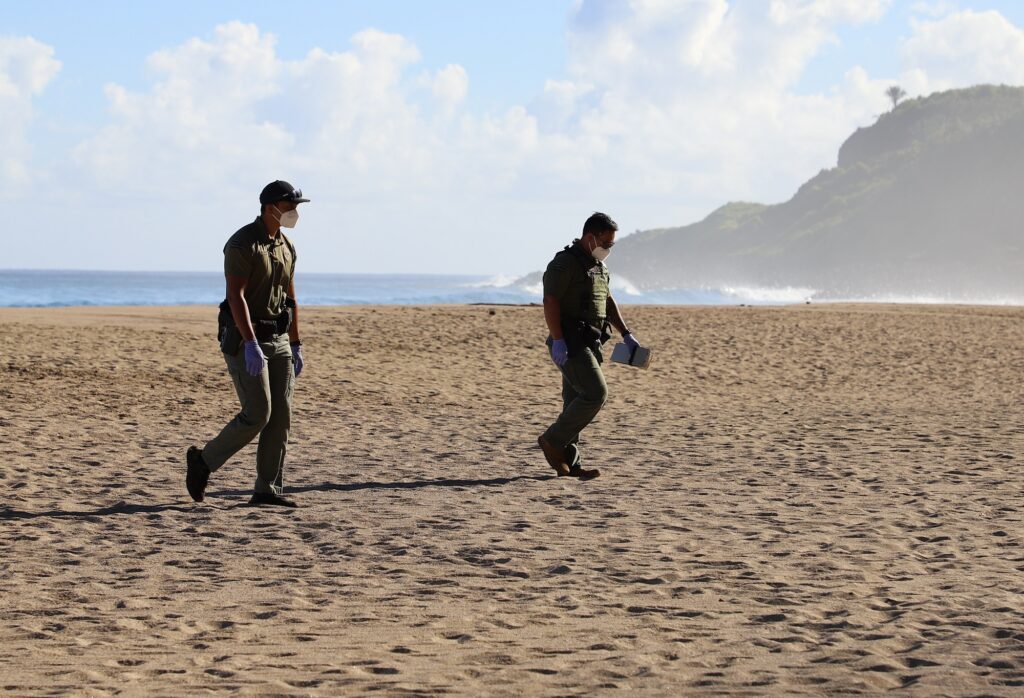Starting September 21st, 2024, the first two miles of the Kalalau Trail will be reopened following an outbreak of norovirus that closed the entire trail.
The Kalalau Trail, Kauai’s iconic hiking trail on the island’s famed Na Pali Coast, has been partially reopened to the public following a recent norovirus outbreak among hikers and campers. The trail was fully closed after an estimated 50 cases of the illness were reported among visitors. Though the total number of cases has stabilized, the Hawaii Department of Land and Natural Resources (DLNR) announced that full access to the trail will remain restricted as precautionary measures continue.
The DLNR has confirmed that starting September 21st, the Kalalau Trail will be reopened for day use for permit holders up to the Hanakapiai Beach area, allowing hikers to explore the first two miles of the trail. Any hiking beyond Hanakapiai, a popular destination for day hikers, remains strictly prohibited. (This section of the Kalalau Trail is also known as the Hanakapiai Trail.) Violations of this restriction could result in citations or even arrests, reports the DLNR. The full reopening of the trail will be determined based on ongoing health assessments and safety measures, but no specific date has been set.
The decision to limit access stems from concerns about the potential spread of norovirus, a highly contagious illness that causes vomiting, diarrhea, and stomach cramps. The virus is primarily transmitted through contaminated water, surfaces, or person-to-person contact.
According to the Hawaii Department of Health (DOH), the outbreak peaked on September 2nd, and no new cases have been reported since September 4th. However, health officials are continuing their investigations, monitoring reports from emergency rooms and urgent care centers, and urging both park visitors and healthcare providers to report any new cases of illness.
To prevent further outbreaks, the DLNR’s Division of State Parks (DSP) has been conducting deep cleanings and disinfection of facilities along the trail and at the Ke’e Beach trailhead. The DSP is also installing signage with health guidelines for campers and hikers, advising them on how to prevent the spread of illness. Additional warnings will be posted near the sea cave adjacent to the Kalalau camping area, a known site of fecal contamination.
Water testing conducted by the Centers for Disease Control and Prevention (CDC) revealed evidence of fecal contamination inside the cave, prompting its continued closure. Fortunately, tests of water, sand, and sediment from the Kalalau Valley did not detect any traces of norovirus, providing some reassurance that the broader area remains safe for visitors.
DLNR Chair Dawn Chang described the outbreak as an “unprecedented situation,” noting that the department is working closely with the DOH to ensure public safety. “Until we are confident that these issues have been adequately addressed, we will err on the side of caution,” Chang stated. She emphasized that the health and safety of the public, as well as the protection of the natural and cultural resources in the park, remain the DLNR’s top priorities.
The Kalalau Trail is renowned for its rugged beauty, offering hikers stunning views of the Na Pali Coast’s dramatic cliffs, verdant valleys, and secluded beaches. However, its remote location and lack of infrastructure also make it vulnerable to environmental health risks, particularly when proper hygiene practices are not followed.
While the immediate public health threat seems to be subsiding, the DLNR and DOH will continue to monitor conditions along the trail and within the Kalalau Valley. Hikers and campers eager to experience the trail’s full 11-mile stretch will need to wait until it is deemed safe to reopen in its entirety. For now, those seeking a glimpse of the Na Pali Coast can enjoy the trail up to Hanakapiai, but are urged to remain vigilant and respectful of the environment.
As the situation evolves, the DLNR will continue to provide updates on the trail’s status, ensuring that both locals and visitors can safely experience one of Kauai’s most iconic hiking destinations.
